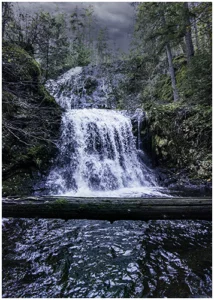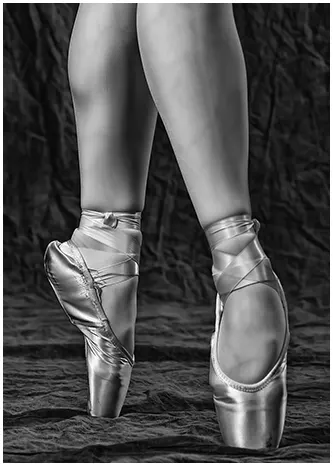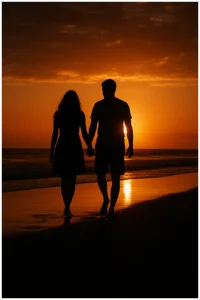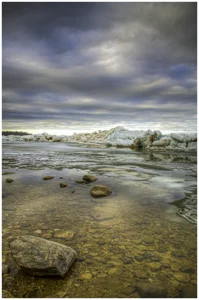
How to Capture Waterfalls Droplets: Showing the Power
I still remember the first time I headed out to photograph waterfalls. The long hike
Grand Opening & Black Friday Sale = 50% Off


Have you ever wondered what makes black and white photos so amazing? It’s all about contrast in black and white photography, especially this thing we call “tonal contrast.” It’s how you go about mixing your lights and darks to make your pictures go from “blah” to “WOW!”
Let’s delve into mastering the use of light and shadow, and I assure you, it’s significantly simpler (and more enjoyable!) than you might anticipate. Read on to turn your black and white pics from “meh” to “WHOA!
Tonal contrast is about mixing light and dark in your photos. It can make your black-and-white shots go from ordinary to amazing.
Tonal contrast is all about highlights, mid-tones, and shadows. These elements add depth to your pictures.
Keeping these elements balanced will make your photos stand out.
Tonal range refers to the full range of tones in your image. More tones make your photos lively and engaging. Fewer tones might make them seem dull.
Mastering tonal range can elevate your black-and-white photography.
The contrast level in your photos affects their mood. High contrast adds drama, while low contrast keeps things calm.
Tonal contrast lets you create photos that match the mood.
Looking to stretch your budget? We’ve got good news! Use the SPECIAL code whosaid15 for an extra 5% off
To make striking black and white photos, play with light, shadows, and composition. Get these right, and your photos will pop with dynamic range.
The key to black and white photos is light and shadow. You want your bright areas and dark areas to stand out.
For the best contrast, shoot during the golden hours when shadows are long and cool.
Adding depth to black and white photos makes them more intriguing. Here are some tips to try:
Try these tips, and your high-contrast photos will come alive.
How you arrange your shot is crucial for high-contrast black and white photos. Smart placement of elements can enhance visual appeal.
Master these composition tricks, and you’ll create stunning high-contrast black-and-white shots.
Want your black and white photos to really stand out? Have you tried boosting the contrast. Here are some tricks to make your images pop.
Filters aren’t just for cool effects; they can boost contrast in black and white photos. Use a red, orange, or yellow filter to darken skies and make clouds more dramatic. Polarizing filters can reduce reflections and increase clarity. With the right filter, you control your photo’s mood.
| Filter Type | What It Does | Perfect For |
|---|---|---|
| Red filter | Darkens skies, boosts clouds | Scenery |
| Orange filter | Warms up tones, deep contrast | People or scenery |
| Yellow filter | Slightly darkens, adds contrast | Everyday shots |
| Polarizing filter | Cuts glare, boosts colours | Water, shiny objects |
Exposure is an important element, with slight adjustments it can make shadows deep and highlights bright. Giving your photos that dramatic feeling.
| Exposure Change | What Happens | Best At |
|---|---|---|
| Underexposure | Bigger shadows, bold lines | Buildings and streets |
| Overexpose | Brighter spots | Faces and light subjects |
Textures can makes your photos come alive. Look for gritty wood, rugged stone, or soft fabric. Using different textures can make your images rich and engaging.
| Texture Type | How it Looks | Best Fit |
|---|---|---|
| Rough surfaces | Dark vs. light contrast | Nature and landscapes |
| Smooth Surfaces | Gentler contrast | Portraits and close-ups |
| Patterns | Adds depth and intrigue | City shots |
Playing with filters, adjusting exposure, and exploring textures can enhance contrast in black and white photos. These techniques can transform an ordinary photo into something extraordinary. Try these ideas and see how they elevate your photos.
...Bob
Mastering contrast involves understanding light and shadow. Here, we’ll look at some practical ways to assess contrast.
A histogram is like a photo’s heartbeat. It shows the shades in your picture, helping you see what works and what doesn’t.
Aim for a histogram that covers the whole range.
When examining a black-and-white photo, find the highlights and shadows. Highlights are the bright spots that catch your eye, while shadows are the darker, moodier areas.
Spotting these elements helps you see how they interact in your photo.
The darker areas in your photo are elements for adding depth. Concentrate on this area to see how they shape your picture’s vibe.
Depth in those shadowy areas leads the viewer’s eyes, adding layers to your story. Keep a little detail there to hold their interest without making it too cluttered.

Mastering tonal contrast can elevate your black and white photos, enhancing their striking and captivating qualities. Here are some hands-on ways to understand and use contrast in your photos.
Exploring black and white film techniques can really strengthen your skills. It makes you focus on details like exposure and how to develop film. This helps you understand how to play with different tones.
Here are some tips to get you started:
Study the works of famous photographers to learn about contrast. Look at their composition and how they tell stories with tones. Here’s what to pay attention to:
Exploring various subjects and textures can greatly enhance your contrast skills. Different surfaces react differently to light, offering various tones. Try these:
By following these tips, you can strengthen your black-and-white photography skills.
Creating stunning black and white photos is all about mastering light and shadows. Once you get the hang of it, your pictures will start telling amazing stories.
Experiment with light and shadow, try different setups, and mix in textures. This can make your photos truly stand out. Additionally, examining your own and others’ photos serves as an intensive training in identifying details and comprehending balance.
Don’t hesitate to use tools to convert your colour photos into black and white masterpieces.
It might take some time, but capturing a powerful image is incredibly rewarding. Keep at it, and you’ll soon be taking eye-catching shots.
The contrast between black and white refers to the stark difference between the two shades, creating a strong visual impact. Black absorbs light, while white reflects it, making them opposites in tone. This contrast enhances clarity, depth, and emphasis in photography, design, and visual arts.
Strong contrast, textures, and patterns look appealing in black and white photography. Subjects like dramatic landscapes, portraits, architecture, and shadows create depth and emotion. High-contrast scenes with bold light and dark areas enhance visual impact, making black-and-white photography striking and timeless.

I still remember the first time I headed out to photograph waterfalls. The long hike

Silhouette photography techniques can turn an ordinary scene into something dramatic, letting the shadows hide

Are you tired of noise or grain messing up your photos? ON1 NoNoise AI could